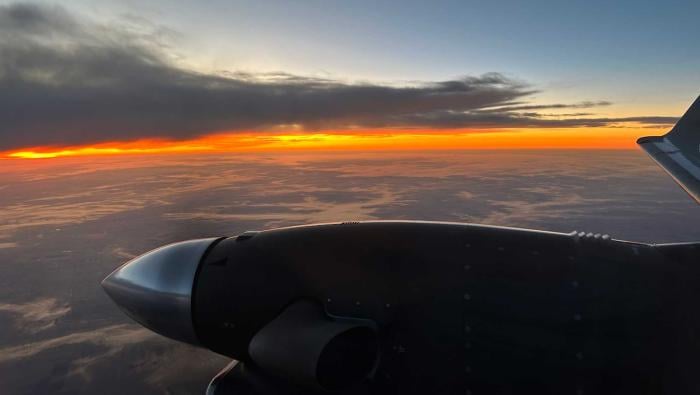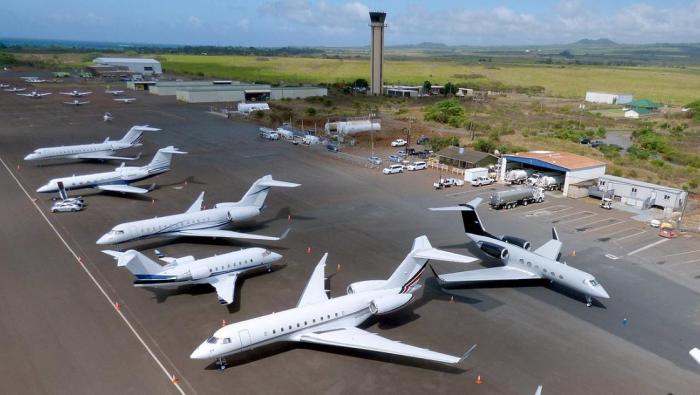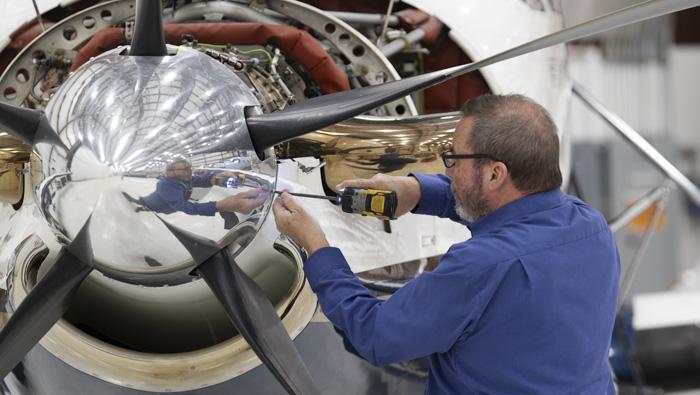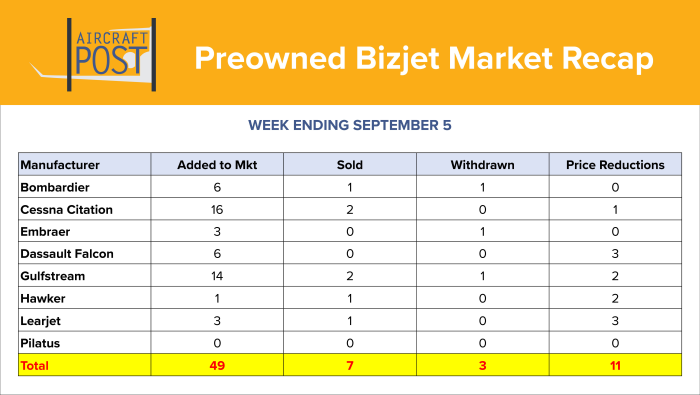|
The super-midsize (SMS) and large ultra-long-range business jet market niches have structural differences in client profiles, needs, and preferences, according to industry consultancy Rolland Vincent Associates (RVA). The former tends to be more price sensitive and the latter more focused on performance and comfort, it said. RVA yesterday released a report, “Tailored to Fit: Decoding the Structural Break Between Super Mid-Size and Large Business Jets,” delving into the differences in the aircraft segments and the factors OEMs must consider as they draw up their next business jets. These differences not only impact aircraft design, but also product strategy and investment decisions, RVA found. SMS buyers are more cost-conscious and value-focused, while large-jet buyers focus on capability, brand prestige, and global reach. Research shows that 4,200-nm range appears to be a “breakpoint” in aircraft category differentiation. RVA analysis points to the next clean-sheet business jet platform to most likely emerge in either the upper end of the SMS or within the large-jet class. However, RVA president Rollie Vincent added, “Our analysis shows that SMS and large jets are not points on a smooth continuum—they are separate markets with their own rules of engagement. Misreading this structural divide can lead to costly missteps in product planning.” Vincent said the RVA report is designed to offer guidance for OEMs and investors on where and how to compete. |
|
|
The global aviation industry continues to place a high priority on sustainability—balancing economic, social, and environmental factors to ensure long-term health for both the planet and society. Significant strides have been made through technological advancements and behavioral shifts. Among the most effective strategies are aircraft weight reduction and optimized flight altitudes, both of which directly reduce fuel consumption. One area receiving renewed attention is the interplay between fuel and oxygen systems, particularly in extended twin-engine operations (ETOPS) and overwater flight planning. This is especially relevant given the release of the revised SAE document AIR5648B, which explains the relationship between aircraft fuel and oxygen systems. Time and distance are the currency of in-flight planning, and applying these to both fuel and oxygen reserves enables a more integrated and effective approach to emergency and contingency planning. Under current rules, scenarios such as an engine failure followed by a cabin decompression require flight planning at 10,000 feet, where oxygen planning is not mandated. However, regulations do permit higher diversion altitudes provided adequate oxygen planning is in place. Flight planning to a higher equal time point diversion altitude—for instance, 20,000 or 25,000 feet rather than the standard 10,000 feet—can produce substantial fuel savings, |
|
|
CAE’s business aviation training center in Central Europe officially opened this week. Complementing the global aviation training provider’s network of facilities, CAE Vienna offers classroom and simulator training for pilots and maintenance technicians. Although CAE Vienna has been quietly operational since April, its strategic location adds “critical training capacity in the region and [makes] a broad portfolio of training programs more accessible than ever,” according to Alexandre Prévost, CAE’s business aviation division president. The 86,000-sq-ft center offers pilot simulator training on four business aircraft types: Gulfstream G550, Bombardier Global 6000 and 7500, and—available as part of the Embraer CAE Training Services (ECTS) joint venture—Embraer Phenom 100/300. Maintenance technician programs, meanwhile, include type training, engine run, taxi courses, and avionics elements. CAE forecasts that the European business aviation industry will require some 7,000 new pilots and 9,000 maintenance technicians over the next decade. Prévost believes CAE Vienna is “ideally equipped and perfectly located to help meet that demand,” offering capacity to train thousands of aviation professionals annually. Looking to the future, a fifth simulator—for the Bombardier Challenger 3500—will come online in October, while a Pilatus PC-24 simulator will be deployed in the second half of next year. The training provider added that increased adoption of digital “smart technologies” will help make training “more personalized, seamless and efficient,” simplifying processes such as making bookings or accessing training records. |
|
|
MRO services provider StandardAero recently celebrated the grand reopening of its expanded business aviation facility at Georgia’s Augusta Regional Airport (KAGS). The project, which took a year to complete, added 80,500 sq ft of hangar, an engine shop, advanced avionics repair capabilities, and customer amenities, increasing the size of the facility by 60%. According to the company, the expansion specifically targeted an increase in MRO capacity for the Honeywell HTF7000, for which StandardAero is licensed by the manufacturer as the exclusive independent heavy overhaul provider, along with additional airframe service capability for large-cabin business jets. While the facility is expected to be fully operational in the first half of 2026, the expansion should add approximately 100 positions to the current 175 employees at the location. The ribbon-cutting ceremony at the now 210,000-sq-ft complex was attended by company employees, state and local officials, and customers. “This expansion is all about readiness and responsiveness,” said Anthony Brancato, president of StandardAero’s business aviation division. “We’re listening to our customers, and they’re asking for more capacity, faster turn times, and a partner they can trust with their most valuable assets. With this investment in Augusta, we’re answering that call—with more space, added expertise, and the same unwavering commitment to excellence.” |
|
|
Sponsor Content: Western Aircraft Maintenance downtime doesn’t have to be stressful. Western Aircraft works side-by-side with operators to anticipate needs, align schedules and foster trust. With proactive planning, honest communication, and true partnership, we transform MRO shop visits into a seamless process, helping you focus on flying, not frustrations. |
|
|
General aviation, including business aircraft, now leads airlines in controller-pilot datalink communications (CPDLC) equipage, according to recent FAA data highlighted by NBAA. While airlines conduct more daily flights and therefore generate more individual CPDLC transactions, NBAA noted that the data shows the business aviation community’s commitment to equipage and participation. “The business aviation community has stepped up to make the financial and hardware commitment to participate in CPDLC and help the FAA make the domestic CPDLC program a success,” said Richard Boll, chair of NBAA’s airspace and flight technologies subcommittee. “We are also seeing an expansion in CPDLC equipage beyond the types of aircraft we saw equip initially.” The FAA’s July 23 En Route CPDLC Participation list identified 3,919 general aviation aircraft eligible to participate in U.S. Domestic En Route CPDLC. In the preceding three months, 3,689 general aviation aircraft used the system, compared with 3,473 airliners. NBAA noted that early adoption was concentrated among large fractional and management companies conducting oceanic operations, but participation has since broadened to domestic operators. More avionics retrofit options have opened the door for smaller aircraft to join the program. According to Boll, an updated FAA “red, yellow, green” avionics list for CPDLC is expected later this year. Avionics on the yellow list are under evaluation, red-listed equipment has identified performance issues, and green-listed configurations are approved for participation. |
|
|
Western Australia has boosted its emergency response capability with the arrival of three Leonardo AW139 helicopters. The aircraft are being operated on behalf of the state government by CHC Helicopter, which on Tuesday announced the formation of a new unit called RAC Rescue. These AW139s have been modified by CHC for use in so-called “all-hazards” roles, including advanced aeromedical care. In addition to sponsorship from the Royal Automobile Club, the operation has received AU$26.7 million ($17.4 million) in funding from the state government. It is managed by Western Australia’s Department of Fire and Emergency Services, for which CHC Helicopter is a contractor. Based at Jandakot and Bunbury, south of Perth, the Leonardo aircraft have replaced Bell 412EP models that have been in service since 2003. Those helicopters flew more than 10,500 missions and more than 1.2 million nm. The AW139s offer greater range than their predecessors and fly at speeds of up to 168 knots. According to CHC, this has given emergency responders greater capability to save patients within the key “golden hour” after an accident. “These new AW139s are already changing lives,” said Cameron Dixon, head of CHC Australia. “Whether in a remote community or over open water, we’re now better equipped than ever to bring people safely back to their loved ones.” CHC also provides search-and-rescue and emergency medical flights in Norway and Ireland. |
|
|
NATA has launched a cyber insurance program specifically designed for aviation businesses, expanding its insurance offerings to address growing digital threats. The program provides a targeted solution to help aviation businesses mitigate cyber risks while maintaining customer trust and operational stability. Coverage includes business interruption and extortion expenses, forensic and breach recertification costs, and data and system restoration. The program was developed to support NATA’s membership, which includes FBOs and air charter operators, in safeguarding sensitive assets and ensuring continuity of operations. Underwritten by E-Risk Services, a subsidiary of Nationwide Mutual Insurance, and administered by AssuredPartners Aerospace Programs, the program is designed to provide members with specialized coverage and a streamlined online submission process. “The digital transformation of general aviation yields immense efficiencies, but also introduces complex risks that require specialized protection,” said NATA president and CEO Curt Castagna. “NATA is proud to deliver a new cyber insurance program that empowers our members to navigate this environment while protecting their data, operations, and invaluable reputation, from the ground to the cloud.” Eric Barfield, president of AssuredPartners Aerospace, added, “In today’s interconnected world, cybersecurity coverage is becoming a fundamental aspect of aviation safety and business continuity. Addressing the sophisticated cyber threats facing general aviation requires a united front, and we are pleased to once again partner with NATA to deliver a program that significantly strengthens NATA members’ digital defenses and operational resilience.” |
|
|

Photo of the WeekDawn patrol over Brazil. Peter Herr, a senior pilot in flight operations at Textron Aviation, captured this stunning sunrise from the cockpit of a Beechcraft King Air 360 during a morning flight over Brazil. There’s nothing quite like watching the world wake up from 20,000 feet, especially when you have a front-row seat and a King Air 360 as your viewing platform. Thanks for sharing, Peter! Keep them coming. If you’d like to submit an entry for Photo of the Week, email a high-resolution horizontal image (at least 2000 x 1200 pixels), along with your name, contact information, social media names, and info about it (including brief description, location, etc.) to photos@ainonline.com. Tail numbers can be removed upon request. Those submitting photos give AIN implied consent to publish them in its publications and social media channels. |
|
|
|
|
AINalerts News Tips/Feedback: News tips may be sent anonymously, but feedback must include name and contact info (we will withhold name on request). We reserve the right to edit correspondence for length, clarity, and grammar. Send feedback or news tips to AINalerts editor Chad Trautvetter. |
|
AINalerts is a publication of AIN Media Group, 214 Franklin Avenue, Midland Park, New Jersey. Copyright 2025. All rights reserved. Reproduction in whole or in part without permission is strictly prohibited. |















